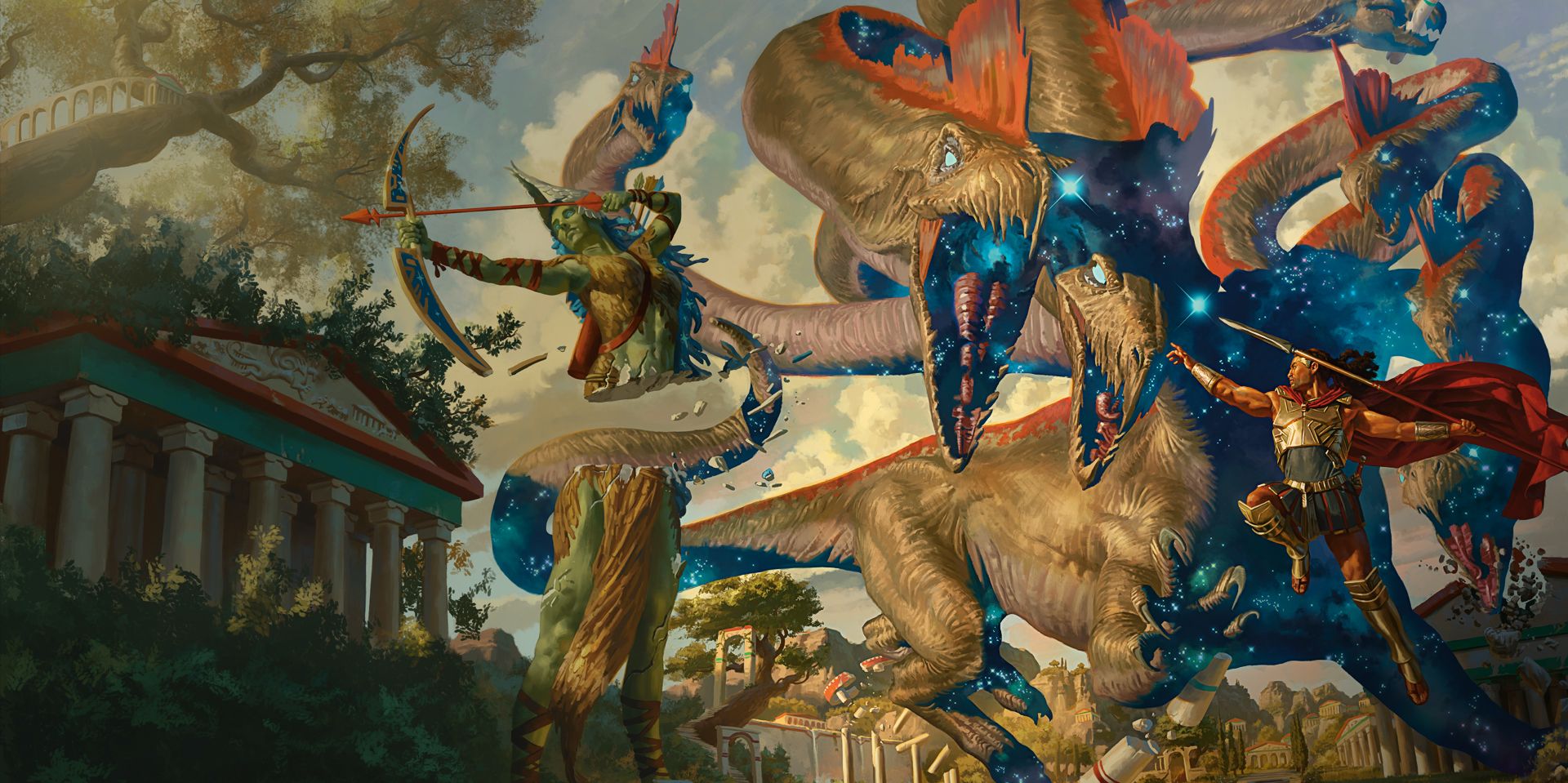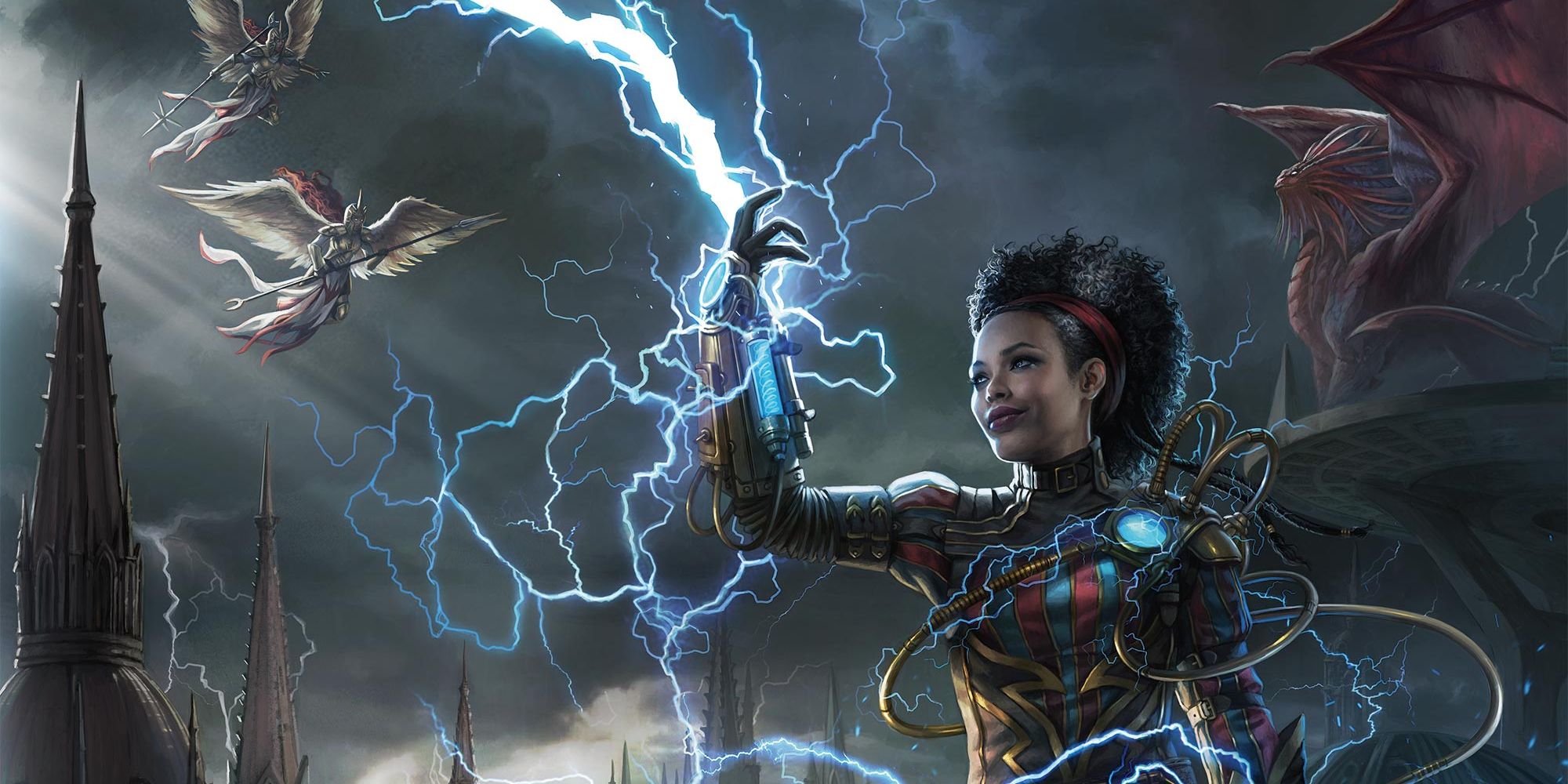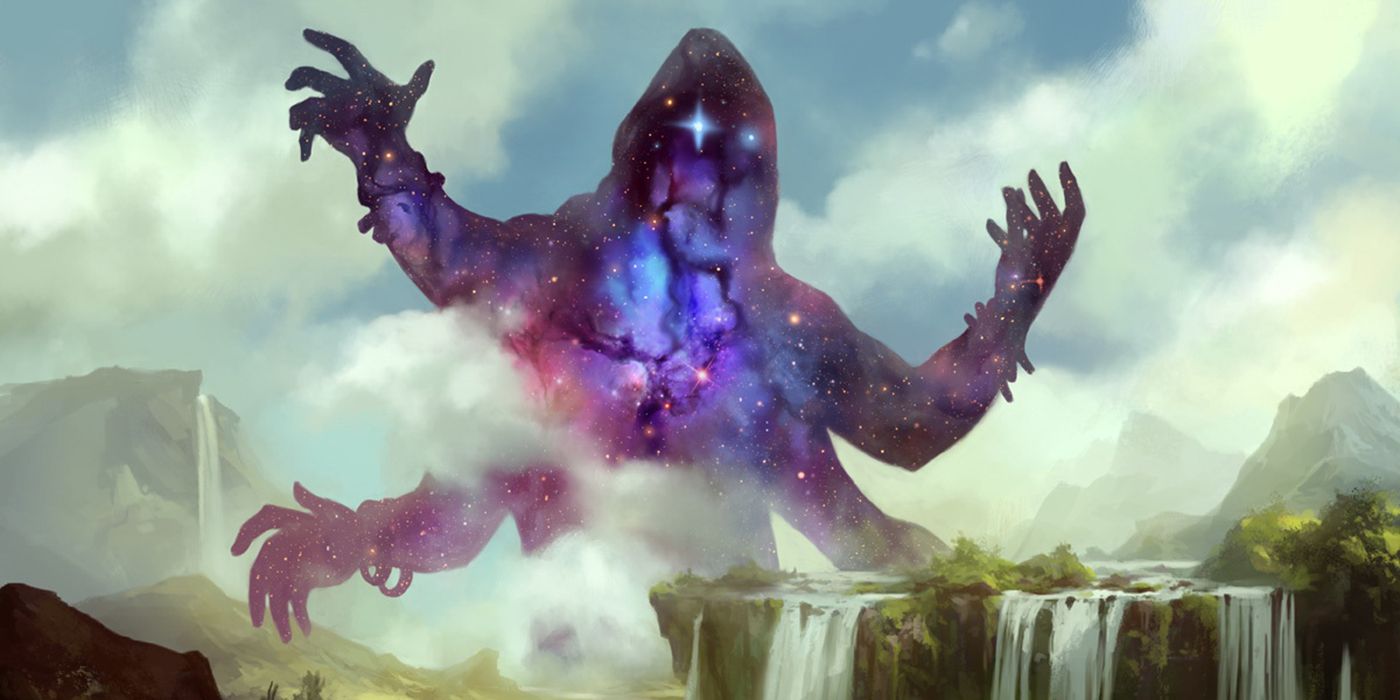Magic: The Gathering and Dungeons & Dragons are two of Wizards of the Coasts' most popular games. They're also both fantasy games based around strategy and storytelling. As such, it makes sense that the two would cross over from time to time. But up until 2018, the two properties were kept firmly apart.
It's impossible to definitively say why this was the case, but there are a number of important factors to consider. At the time of Wizards' acquisition of TSR (the company that made D&D), many fans were concerned over a potential absorbing of D&D by the larger and more popular Magic: The Gathering. Keeping product lines separate could have been a tactic Wizards' executives employed to head off this fear.
It's also worth noting that, at the time of the acquisition, Dungeons & Dragons was operating under its Second Edition. Wizards would release their own ruleset later, but this Third Edition received so much nitpicking and criticism that a heavily modified 3.5e was created. 3.5e would reign supreme for the next four years until Wizards announced a fourth version of the tabletop game's rules. Fourth Edition would be generally reviled by fans, maligned for its tactics and area-defined rules that often required the use of miniatures rather than simply allowing them. It wouldn't be until five years later that the creation of "D&D Next" was announced.
Fifth Edition was generally seen as a simplification of D&D without the labyrinthine intricacies of 3.5e nor the tactical rigidity of 4e. It has been massively successful, with the rise of actual-play shows pushing the game further into the popular consciousness. It's possible that this new popularity combined with 5e's more rules-lite nature was what finally allowed for the Guildmaster's Guide to Ravnica to be created. Ravnica is one of Magic's most popular planes, second only to Dominaria in the amount of sets it's received over the course of the game. It's home to 10 guilds, each of which represents a "pair" of two of the game's iconic five colors.
The Guildmaster's Guide to Ravnica illustrates the world in vibrant color, detailing each of the guilds and how they fit into the larger whole of the city-covered plane. It provides racial and class options for players looking to play a Ravnican character, as well as giving Dungeon Masters stat blocks for the plane's most important NPCs. Additionally, it carries over the "Renown" system from previous D&D books, applying it here to the various guilds. Players looking to curry favor or rise in rank within any of these groups can use this system to give mechanical weight to usually immaterial social currency.
The Guildmaster's Guide would be followed over a year later by Mythic Odysseys of Theros, a sourcebook detailing the Greek-inspired plane of Theros. It would take a similar approach to the Guildmaster's Guide, simply detailing the plane so DMs could use it as a backdrop for their games. It also introduced the piety system, which players could use to measure their favor and standing with the various gods of the plane. These gods are key to the flavor and story of Theros, so it's natural that the book would both detail them and all the ways players could amuse or anger them.
The book also provides stat blocks for various Greek-inspired monsters, like Harpies, Gorgons and Merfolk. The most terrifying of these creatures even receive "Mythic Traits," a concept created solely for the new book. Mythic enemies act almost like video-game bosses, refilling their health and gaining terrifying new abilities when players would otherwise kill them. The most formidable of these is Tromokratis, a massive kraken already represented in-game by its own legendary card. The gods of Theros do not receive their own statblocks, which is a wise choice on Wizards' part. There is an old saying in the RPG community, and one that seems most apt here: "if you stat it, they will kill it."
While these crossovers between Magic and D&D have been well-received, they're also notably one-sided. In both of these cases D&D is making sourcebooks about Magic: The Gathering planes. There are no Magic cards featuring Drizzt Do'Urden, nor any planeswalkers making their way into Ravenloft. But all of that will change soon, and the Magic set Adventures in the Forgotten Realms was announced earlier this year.
This is a full expansion set for the game, taking the place of the yearly Core set. It will be fully legal in Standard, Modern and Eternal formats, with the promise to bring iconic D&D characters and items to life. It's unknown currently if any future crossovers will take place, but Magic Head Designer Mark Rosewater is fond of the phrase "success breeds repetition." The summer 2021 will bring with it Adventures in the Forgotten Realms, and its success or failure will likely be the deciding factor in the relationship between Wizards' two most successful brands.



